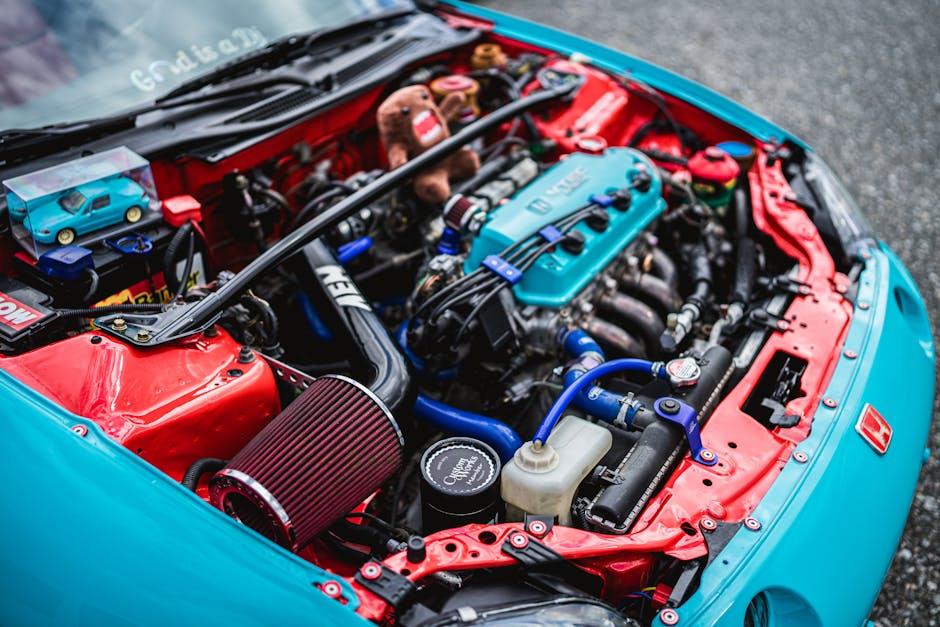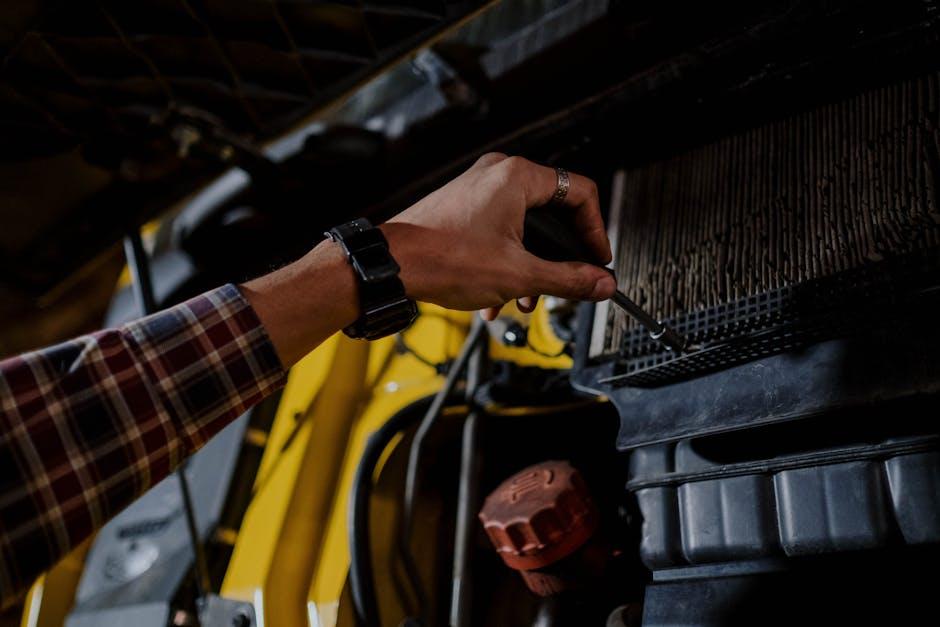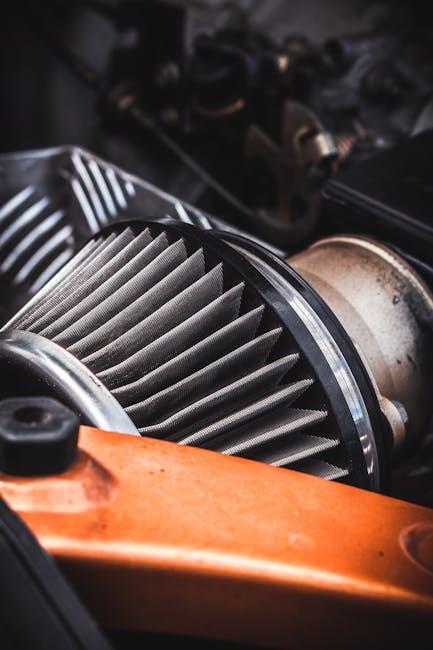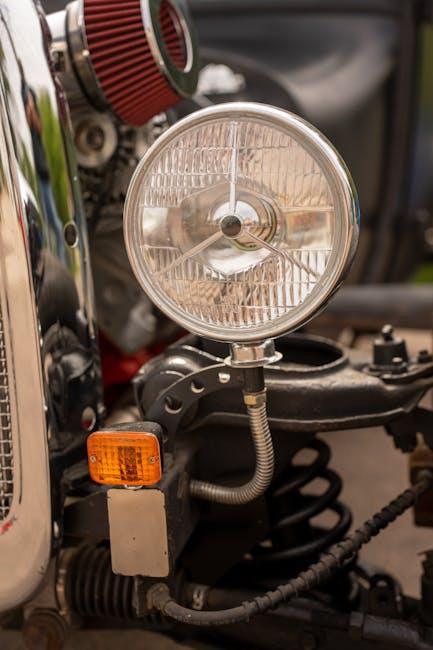Beneath the hood of every vehicle, the engine breathes in a crucial lifeline—clean air. The engine air filter plays the silent but essential role of keeping dirt, dust, and debris at bay, ensuring your engine runs smoothly and efficiently. Yet, like any vital component, air filters wear down over time, risking performance and fuel economy. Knowing how to check and replace your engine air filter is not just a maintenance task—it’s a simple step toward protecting your engine’s health and extending its lifespan. In this guide, we’ll walk you through the straightforward process of assessing and swapping out your engine air filter, empowering you to keep your vehicle’s heart breathing easy.
Table of Contents
- Understanding the Role of Engine Air Filters in Vehicle Performance
- Identifying Signs That Your Engine Air Filter Needs Replacement
- Step-by-Step Guide to Inspecting Your Engine Air Filter Properly
- Choosing the Right Replacement Air Filter for Your Engine
- Essential Tools and Safety Precautions Before Starting the Replacement
- Tips for Maintaining Your Engine Air Filter to Maximize Longevity
- Q&A
- Closing Remarks

Understanding the Role of Engine Air Filters in Vehicle Performance
Engine air filters play a crucial role in maintaining optimal vehicle performance by ensuring that only clean air reaches the engine’s combustion chambers. By trapping dust, pollen, and other airborne particles, these filters prevent abrasive contaminants from entering the engine, which can cause wear and reduce efficiency. A clean air filter helps maintain the correct air-fuel mixture, leading to improved fuel economy, smoother acceleration, and reduced emissions. On the contrary, a clogged or dirty filter can restrict airflow, causing the engine to work harder and potentially decreasing horsepower.
To better understand their impact, consider the following benefits of regularly checking and replacing your engine air filter:
- Enhanced Engine Longevity: Reduces wear on internal components.
- Improved Fuel Efficiency: Optimizes combustion by allowing proper air intake.
- Lower Emission Levels: Promotes cleaner burning of fuel.
- Smoother Engine Performance: Prevents misfires and rough idling.
| Filter Condition | Impact on Performance | Replacement Interval |
|---|---|---|
| Clean | Optimal airflow and fuel efficiency | Every 12,000 to 15,000 miles |
| Dirty | Reduced power and increased fuel consumption | Immediate replacement recommended |
| Damaged | Potential engine damage from contaminants | Replace as soon as detected |

Identifying Signs That Your Engine Air Filter Needs Replacement
One of the first indicators that your engine air filter needs attention is a noticeable decline in engine performance. You might experience sluggish acceleration or a rough idle, which can signal that your engine is not getting the optimal airflow it requires. Additionally, an increase in fuel consumption often accompanies a clogged air filter because the engine compensates for reduced oxygen by burning more fuel. Another easy sign to look out for is unusual black smoke from the exhaust, hinting at incomplete combustion caused by dirty air filters.
Visually inspecting the filter is a straightforward method to determine its condition. Here’s a quick checklist to guide you:
- Remove the filter: Locate and take out the air filter from its housing.
- Check for dirt and debris: A healthy filter should appear light and clean, while a darkened, dusty, or clumped surface indicates excessive buildup.
- Light test: Hold the filter up to a light source. If little to no light passes through, it’s time for a replacement.
| Symptom | Possible Cause | Action |
|---|---|---|
| Decreased fuel efficiency | Blocked air filter reducing airflow | Inspect and replace if dirty |
| Engine misfires | Contaminated air entering engine | Clean or swap air filter |
| Unusual exhaust smoke | Incomplete combustion due to poor airflow | Replace air filter promptly |

Step-by-Step Guide to Inspecting Your Engine Air Filter Properly
Begin by locating the air filter housing, usually a black plastic box near the engine. Unlock the clips or screws holding the cover in place and carefully lift it away. Gently remove the air filter, taking care to avoid allowing debris to fall into the air intake. Once out, hold the filter up to a bright light source—if you can barely see light through the filter material, it’s a sign that dust and grime have clogged the fibers, and replacement is necessary. Additionally, look for tears or holes, as any damage will significantly reduce the filter’s effectiveness.
Next, evaluate the filter’s condition further by performing a simple shake test. If a noticeable amount of dirt or small particles falls from the filter when you tap it lightly, it’s time for a fresh one. Use the following checklist to ensure a thorough inspection:
- Check for discoloration: Filters darkened from original white or off-white.
- Inspect for moisture: Dampness can cause mold growth and reduced air flow.
- Assess the sealing edges: Ensure the filter sits snugly within the housing without gaps.
- Compare mileage: Filters usually need replacing every 12,000 to 15,000 miles, depending on driving conditions.

Choosing the Right Replacement Air Filter for Your Engine
When it comes to selecting a replacement air filter, it’s important to balance performance, filtration efficiency, and cost. Start by consulting your engine’s manual or the manufacturer’s website to identify the exact specifications and compatible filter models. Filters come in various types, including paper, foam, and cotton gauze, each offering different levels of airflow and dirt-trapping capability. Paper filters are the most common and cost-effective, ideal for everyday driving. For enthusiasts seeking improved airflow, cotton gauze filters are washable and reusable but may require more maintenance. Meanwhile, foam filters excel in dusty environments, providing excellent dust capture and durability.
Consider these factors to ensure your engine breathes clean and performs optimally:
- Filter dimensions: Match the replacement to the original size for a proper seal and fit.
- Filtration rating: Look for a high-efficiency filter rating to protect engine components from harmful particles.
- Driving conditions: Select filters designed for your typical environment, whether it’s urban, off-road, or high-performance use.
- Brand reputation: Opt for trusted brands that meet industry standards for reliability and durability.
| Filter Type | Best Use | Maintenance |
|---|---|---|
| Paper | Everyday driving | Replace regularly |
| Foam | Dusty/off-road | Washable & reusable |
| Cotton Gauze | Performance tuning | Clean & oil periodically |

Essential Tools and Safety Precautions Before Starting the Replacement
Before diving into the replacement process, it’s vital to arm yourself with the right tools to ensure a smooth and safe experience. At a minimum, you’ll need a screwdriver set (usually flathead or Phillips), a clean cloth for wiping away dust, and a new air filter compatible with your vehicle make and model. Optional tools such as a vacuum cleaner can be handy for removing stubborn debris inside the air filter housing. Having these essentials at hand not only speeds up the task but also minimizes the risk of damaging any engine components.
Safety should be your top priority when working under the hood. Always start by turning off your engine and letting it cool down completely to avoid burns or other injuries. Wearing protective gloves and safety goggles adds an extra layer of protection against dust, dirt, and potential sharp edges. Additionally, it’s a smart move to disconnect the battery to prevent any accidental electrical mishaps during the replacement. Keep these precautionary measures in mind to maintain a safe and efficient workflow throughout your DIY maintenance.

Tips for Maintaining Your Engine Air Filter to Maximize Longevity
Keeping your engine air filter in prime condition is essential for enhancing your vehicle’s performance and fuel efficiency. Start by checking your filter regularly, especially if you often drive in dusty or urban environments. A simple visual inspection can reveal if the filter is clogged with dirt or debris. Remember, a clean air filter allows for better airflow, which means your engine can breathe easier and work more efficiently. Overlooking this small maintenance step could lead to reduced engine power and increased fuel consumption.
Tips to maintain your engine air filter effectively:
- Inspect the filter every 12,000 to 15,000 miles or as recommended by your vehicle’s manual.
- Keep an emergency replacement filter handy for unexpected situations.
- Clean the surrounding air filter housing to prevent dirt buildup when changing filters.
- Use high-quality OEM or manufacturer-approved filters to ensure proper fit and filtration.
- Avoid washing disposable filters; replace them instead to maintain filtration integrity.
| Maintenance Task | Recommended Frequency |
|---|---|
| Visual Inspection | Every 6 months |
| Filter Replacement | 12,000-15,000 miles |
| Air Filter Housing Cleaning | At every filter change |
Q&A
Q&A: How to Check and Replace Engine Air Filters
Q1: Why is the engine air filter important?
A: The engine air filter acts as a gatekeeper, preventing dust, dirt, and debris from entering your engine. A clean air filter ensures your engine breathes easily, improving performance and fuel efficiency while reducing harmful emissions.
Q2: How often should I check my engine air filter?
A: It’s wise to inspect your air filter every 12,000 to 15,000 miles or at least once a year. However, if you drive in dusty or harsh conditions, checking it more frequently is a smart move.
Q3: How can I tell if my air filter needs replacing?
A: Visual cues are your first hint. Remove the filter and hold it up to light—if little to no light passes through or you notice heavy dirt and debris, it’s time for a new one. Other signs include reduced fuel economy, engine misfires, or decreased power during acceleration.
Q4: What tools do I need to check and replace the air filter?
A: Usually, a screwdriver or a simple wrench will do. You’ll need these to open the air filter housing, but some cars have clips or snaps that don’t require tools.
Q5: How do I find the air filter in my vehicle?
A: Open your hood and look for a rectangular or cylindrical black plastic box near the engine. This is the air filter housing. Refer to your owner’s manual if you have trouble locating it.
Q6: What’s the step-by-step process to replace the air filter?
A:
- Turn off the engine and open the hood.
- Release the clips or unscrew the housing cover.
- Carefully remove the old air filter.
- Vacuum out any dirt inside the housing if needed.
- Insert the new filter, ensuring it fits snugly.
- Replace the cover and secure clips or screws.
- Close the hood and you’re good to go!
Q7: Can I use any air filter or do I need a specific one?
A: It’s best to use filters made for your vehicle’s make and model. Check your owner’s manual or ask at an auto parts store to get the right fit and quality.
Q8: Does replacing the air filter improve engine performance right away?
A: Often, yes! A fresh air filter can refresh airflow to your engine, leading to smoother acceleration and sometimes better mileage. However, the impact might be subtle unless the old filter was severely clogged.
Q9: Is this a task I can do on my own, or should I see a mechanic?
A: Replacing an air filter is one of the simplest car maintenance tasks and can be done by most vehicle owners without special skills or tools. If you feel unsure, though, a mechanic can always help.
Q10: What happens if I wait too long to replace the air filter?
A: A dirty air filter can strain your engine, reduce fuel efficiency, and increase emissions. Over time, it might contribute to engine damage or costly repairs by allowing contaminants past the filter.
Keeping your engine air filter clean is like giving your car fresh breath—doing so keeps your ride smooth, efficient, and ready for the road ahead.
Closing Remarks
Maintaining a clean engine air filter is a simple yet vital step toward ensuring your vehicle’s optimal performance and longevity. By regularly checking and replacing your air filter, you’re not only protecting your engine from harmful debris but also helping it breathe easier for smoother rides ahead. With a little attention and the right know-how, this small task can make a big difference under the hood. So, whether you’re a seasoned gearhead or a curious beginner, keeping your air filter fresh is one straightforward way to keep your engine—and your journey—running clean and clear.

